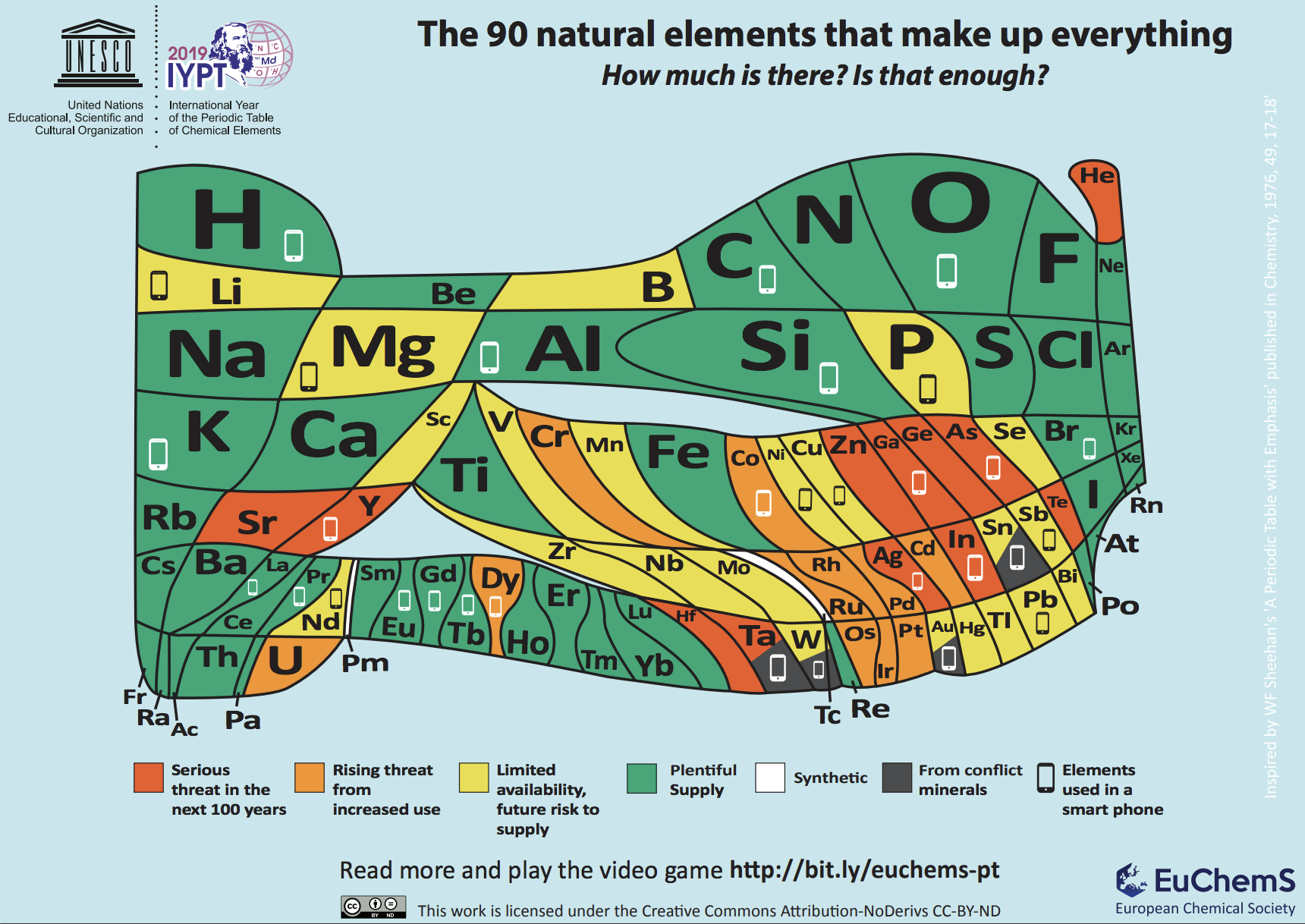Celebrating the Periodic Table of Elements
A chance to look back on accomplishments but also consider our planet's future.
The first recognized periodic table of elements was published 150 years ago by Dmitri Mendeleev and has been heralded as one of the most important scientific achievements in chemistry. It is also important in biology, physics, medicine and earth sciences; it is a universal language connecting students, teachers and researchers from all over the world.
That is why the United Nations General Assembly and the United Nations Educational, Scientific and Cultural Organization (UNESCO) proclaimed 2019 the International Year of the Periodic Table of Chemical Elements (IYPT2019), holding conferences and symposiums in different countries and a closing ceremony in Tokyo. This is an opportunity to celebrate scientific achievements as well as the elements themselves — the Nobelium contest asked people to submit educational videos, stories, poems, songs, and art about the periodic table or individual elements.
But it is also a chance to consider the availability of resources needed by a growing global population.

European Chemical Society
To highlight this, the European Chemical Society (EuChemS) designed a quantitative periodic table in which the area of each element is proportional to its abundance (in a logarithmic scale) in earth’s crust and atmosphere which is color-coded to represent how long each element will last if we continue to use it at the current rate. Some elements are of more concern than others because they are naturally less abundant in earth’s crust or they come from conflict minerals or they are not easy to recycle. Elements’ supply is especially threatened by their intensive use in devices like laptops, tablets, and smartphones. Examples of elements of concern include indium, which is part of the transparent indium tin oxide (ITO) layer of touch screens and tantalum, present in microcapacitors and which can come from the conflict mineral coltan. Both indium and tantalum have a recycling rate of less than 1% and considering the huge number of smartphones (it's estimated that there are nearly 3 billion smartphone users worldwide) - significant quantities of these elements are being lost.
Celebrating the periodic table has therefore become a call to preserve our earth’s precious resources and to live in a more sustainable way, by reducing the amount that we consume, repairing, reusing and properly recycling: this is how we can continue to enjoy our wonderful planet for generations to come.